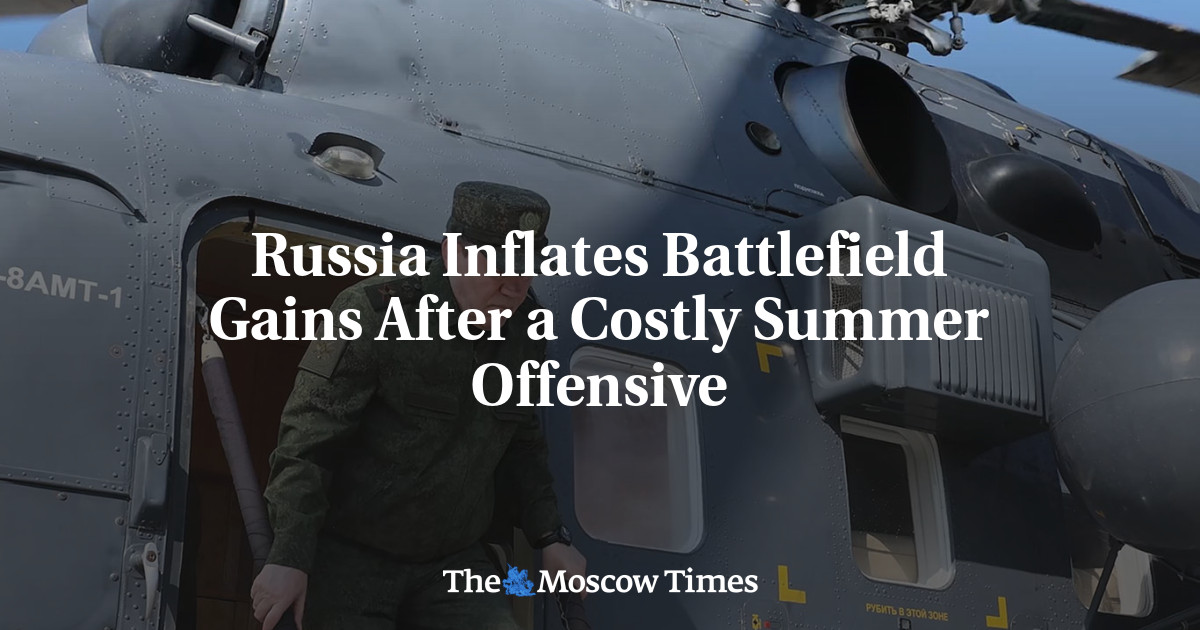
Russia Inflates Battlefield Gains After a Costly Summer Offensive
How did your country report this? Share your view in the comments.
Diverging Reports Breakdown
Russia Inflates Battlefield Gains After a Costly Summer Offensive
Independent assessments paint a far less rosy picture. Western analysts, Ukrainian officials and even pro-Russian military bloggers say Moscow’s progress is far more modest than the Kremlin claims. The gap between the Russian military’s upbeat reports and the battlefield reality helps feed into President Vladimir Putin’s conviction that Russia is winning the war, analysts say. That perception, they argue, undercuts any incentive for the Kremlin to engage in serious peace talks with the Ukrainian government. The aim is twofold: to project strength to Western audiences debating continued military aid to Ukraine and to reassure a domestic public weary of war, ISW”s analysts say, adding that Moscow failed to capture a single major Ukrainian city this summer. The only clear success came in Chasiv Yar, a small but strategic Donetsk region town where months of fighting left much of the settlement in ruins. In Kupiansk, more than a year of grinding combat has yet to yield a breakthrough.
A Russian serviceman of an artillery detachment. Alexei Konovalov / TASS
According to the U.S.-based Institute for the Study of War, Russia has gained about 2,346 square kilometers and 130 settlements since March 1 — roughly a third less than Gerasimov claimed. Around Kupiansk, which Gerasimov said was half under Russian control, satellite imagery and open-source data suggest Moscow controls only 6.3% of the city’s built-up areas. Some of the discrepancies appear to be by design. The map shown at Gerasimov’s briefing, for example, included areas seized as far back as early 2024, inflating the scale of this year’s achievements. ISW’s analysts say the aim is twofold: to project strength to Western audiences debating continued military aid to Ukraine and to reassure a domestic public weary of war. On the ground, Moscow failed to capture a single major Ukrainian city this summer. The only clear success came in Chasiv Yar, a small but strategic Donetsk region town where months of fighting left much of the settlement in ruins. Elsewhere, Russian advances have stalled or been rolled back. Russian troops reached the outskirts of Pokrovsk, a Ukrainian stronghold in Donetsk, but failed to secure control. In August, Russian units made a swift advance near Dobropillia northeast of Pokrovsk, but Ukrainian forces have since regained some ground in a counteroffensive. Stupak, citing military sources, said Kyiv is now trying to “trim” the salient around Dobropillia; the process is slow and costly, but Ukraine so far retains the initiative in this localized operation. In Kupiansk, which Ukrainian forces liberated from Russian occupation in late 2022, more than a year of grinding combat has yet to yield a breakthrough. Gerasimov’s claim that half the city is under Russian control has not been confirmed by Ukrainian OSINT projects and has even drawn skepticism from some pro-Russian bloggers. The pro-Russian Telegram channel Anatoly Radov, citing Russian soldiers, reported that a significant part of the area around Kupiansk is a “grey zone” where small groups of soldiers move through the forests rather than a consolidated occupation. “They are slowly pushing through our defenses. We’re short on manpower — some units are down to 14% of their strength. A Ukrainian retreat is inevitable, but not on the scale the Kremlin wants,” Ukrainian expert Stupak said. Russia exploits Ukraine’s manpower shortage by sending small groups to slip through Kyiv’s positions and then bring in reinforcements to seize ground, Stupak said. The Russian Defense Ministry has released footage of soldiers planting flags in contested areas of Kupiansk, presenting them as evidence of conquests.
Chief of the General Staff of the Russian Armed Forces Army General Valery Gerasimov and Vladimir Putin. kremlin.ru
